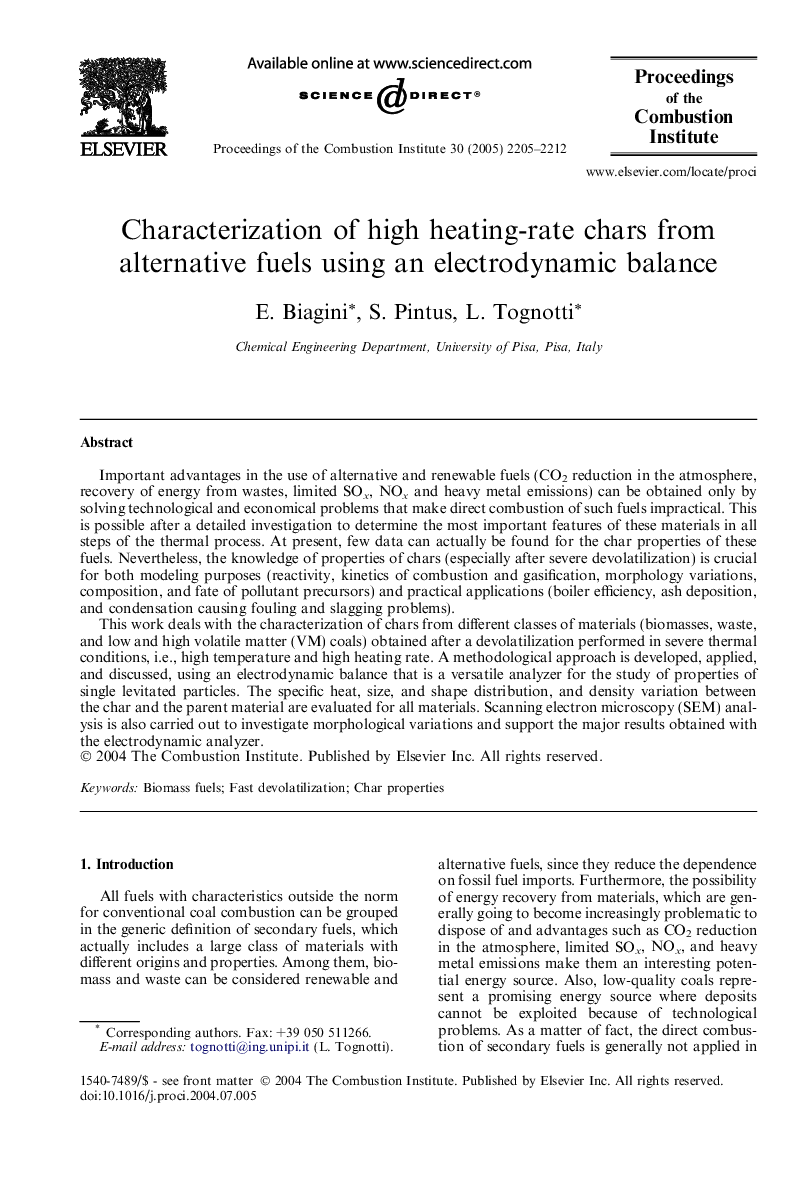| Article ID | Journal | Published Year | Pages | File Type |
|---|---|---|---|---|
| 240965 | Proceedings of the Combustion Institute | 2005 | 8 Pages |
Important advantages in the use of alternative and renewable fuels (CO2 reduction in the atmosphere, recovery of energy from wastes, limited SOx, NOx and heavy metal emissions) can be obtained only by solving technological and economical problems that make direct combustion of such fuels impractical. This is possible after a detailed investigation to determine the most important features of these materials in all steps of the thermal process. At present, few data can actually be found for the char properties of these fuels. Nevertheless, the knowledge of properties of chars (especially after severe devolatilization) is crucial for both modeling purposes (reactivity, kinetics of combustion and gasification, morphology variations, composition, and fate of pollutant precursors) and practical applications (boiler efficiency, ash deposition, and condensation causing fouling and slagging problems).This work deals with the characterization of chars from different classes of materials (biomasses, waste, and low and high volatile matter (VM) coals) obtained after a devolatilization performed in severe thermal conditions, i.e., high temperature and high heating rate. A methodological approach is developed, applied, and discussed, using an electrodynamic balance that is a versatile analyzer for the study of properties of single levitated particles. The specific heat, size, and shape distribution, and density variation between the char and the parent material are evaluated for all materials. Scanning electron microscopy (SEM) analysis is also carried out to investigate morphological variations and support the major results obtained with the electrodynamic analyzer.
